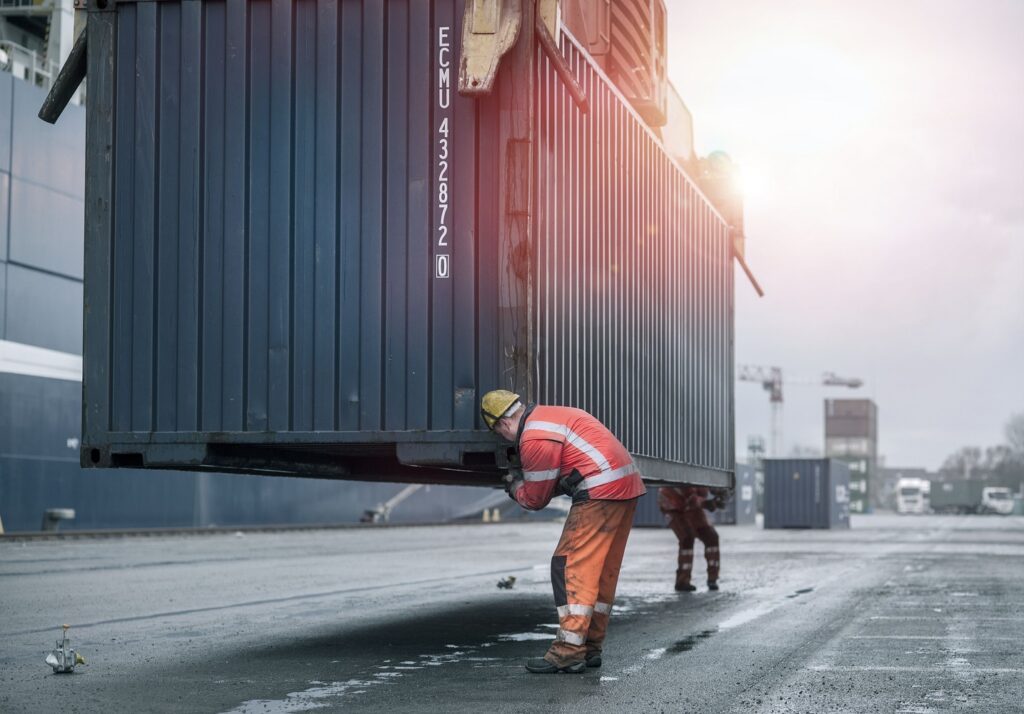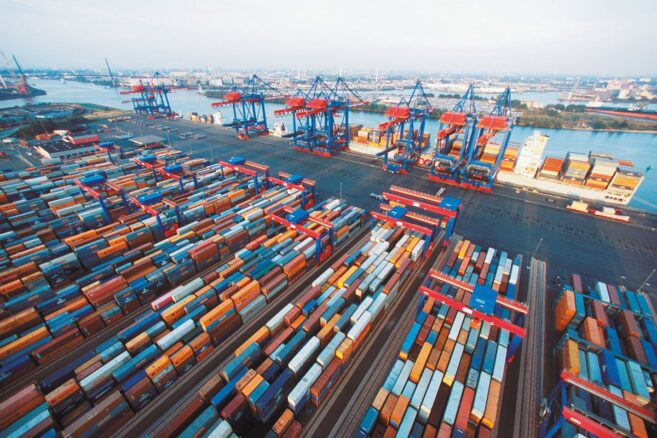Shipping from the Far East: Challenges for hardware wholesalers
Gianluca Marconi, Senior Vice President Ocean Freight at DB Schenker, outlines the current situation of containerized ocean freight from the Far East to Europe, with interesting forecasts for the current year: a crucial update for hardware wholesalers and those who regularly import from the Far East.
During the conference dedicated to the hardware wholesale sector, organized last November in Milan, we hosted Gianluca Marconi from DB Schenker, who presented to the audience the situation of maritime transport from the Far East to Europe.
We recently met with him again for an update on the recent dynamics affecting alliances between shipping companies, delays in transit times, and the role of a logistics operator like Schenker in supporting customers who regularly import from the Far East.
Buyer Point: What is the current situation of containerized ocean freight for importers and wholesalers operating between the Far East and Europe?
Gianluca Marconi: In recent years, the maritime logistics sector has experienced a series of significant supply chain disruptions. The most recent originated with the COVID-19 pandemic.
However, it’s important to take a step back and recall a previous event, dating back to August 2016, when there was a rapid and considerable reduction in available cargo capacity due to the bankruptcy of Hanjin Shipping, a major Korean shipowner with state participation.
Fundamentally, within a short period, approximately 4.5-5% of global maritime transport capacity disappeared. This event had significant repercussions, particularly on the American market, as the end of August coincides with the peak of the sourcing season for the Christmas holidays, with large retailers like Walmart starting their preparations as early as July.
Subsequently, the COVID-19 pandemic triggered a further and massive disruption of the global logistics chain. In the initial phase, widespread lockdowns led to a halt in shipments and production. Furthermore, goods already in transit found themselves stuck in congested ports, as ships continued to unload containers that were not being picked up. This generated a domino effect that affected logistics for about a year and a half.
Buyer Point: How did the shipping carriers react during that period?
Gianluca Marconi: The sudden influx of enormous volumes of goods created further bottlenecks and congestion globally, especially in ports. As a result, the punctuality of ships suffered a drastic decline.
In the past, the global average punctuality ranged between 70% and 80%, with average delays of between one and a half and two and a half days. With the onset of the pandemic, there was a collapse, with punctuality dropping to around 50%, a level from which we have not yet recovered, with peak delays exceeding a week. These delays have entailed enormous operating costs for shipowners, who often pay for the charter of ships with additional expenses of hundreds of thousands of dollars per day.
That being said, February of this year represented a turning point with the start of new alliances between shipping companies.
THE NEW ALLIANCES BETWEEN SHIPPING COMPANIES
Buyer Point: Could you summarize the changes that have occurred in the landscape of alliances between the major shipping companies?
Gianluca Marconi: Until the previous year, the sector was characterized by the presence of three main macro-alliances.
The largest of these, 2M, consisting of Mærsk and MSC, has dissolved. MSC, currently the world’s leading carrier in terms of capacity, has decided to operate independently, leveraging its own resources and operational capabilities. Mærsk, on the other hand, has joined forces with Hapag-Lloyd to form a new alliance called Gemini.
The previous consortium Hapag-Lloyd was part of, called The Alliance, now renamed “Premier,” continues to operate with significant investments from companies such as ONE (Ocean Network Express), formed from the merger of three Japanese companies, South Korea’s Hyundai, and Taiwan’s Yang Ming.
The only alliance that has remained unchanged in its composition is The Ocean Alliance, which includes the French company CMA CGM and the Chinese company COSCO Shipping.
In this scenario of changes, many carriers have modified their services in order to attract new customers, although today they all face the major problem related to Suez.



THE SUEZ CANAL
Buyer Point: What are the main reasons why transit through the Suez Canal is currently being avoided?
Gianluca Marconi: In the past, the route via Suez was the preferred way for traffic between Asia and the Mediterranean, of particular interest to hardware wholesalers, as it avoided circumnavigating Africa. Currently, most ships are instead circumnavigating Africa, passing through the Cape of Good Hope, due to the risk posed by Houthi attacks, resulting in an average increase in transit times of between two and three weeks compared to the Suez route: this entails higher ship depreciation costs and increased fuel consumption and pollution, with consequent higher penalties for European regulations.
Currently, there is a single service that still transits through Suez, called Fenician, escorted by the French Navy and, occasionally, by the Italian Navy or other present international forces. However, dependence on these escorts makes transit uncertain and risky, with the possibility of being blocked, which could be even more problematic than the African circumnavigation
Buyer Point: What are your forecasts for the coming months, and how do you expect the situation to evolve?
Gianluca Marconi: One of the most significant changes that industry operators, and particularly wholesalers, expect in 2025 is precisely the restoration of transit through the Suez Canal. This prospect seemed imminent until a few days ago, when a massive intervention by American armed forces against the Houthis took place in an attempt to restore security in the region. From the perspective of shipping companies, this event represented a setback of about six months, implying that the waters of the area will remain unstable for a similar period. However, in the medium to long term, this action could prove to be a winning strategy.
In this context, it is extremely unlikely that concrete assessments can be made as early as June. Consequently, it is difficult to hypothesize a return to transit via Suez before the end of the year. Personally, I would be very surprised if this were to happen during 2025.
THE ROLE OF SCHENKER
Buyer Point: What specific services and solutions does your company offer for the needs of hardware wholesalers?
Gianluca Marconi: Our priority is to constantly and continuously monitor the evolving situation, not only at the international geopolitical level but also regarding the dynamics of individual carriers and their service offerings. Our goal is to promptly identify any new services available or any changes to existing ones.
We are committed to staying constantly updated on the performance of different maritime transport services, in order to be able to offer our end customers, the importers, customized and tailored logistics solutions for their specific needs.
Buyer Point: A real consultancy service for the client?
Gianluca Marconi: Our in-depth knowledge of the transport sector, combined with a broad understanding of the dynamics of various product sectors and transport needs, both continuous and seasonal, allows us to offer a targeted consulting and support service. Our aim is to fully understand the specific needs of each client, which can vary greatly.
On an informational level, we are investing in technology and digitalization, also using artificial intelligence to develop a predictive model. This system continuously collects data from shipping companies’ websites, monitoring the physical situation of individual ships. Based on this information, the model can make predictions about port congestion and sailing times.
Unexpected events are inevitable, but our ability to intercept them quickly and react with effective countermeasures is what we believe can offer significant added value to our customers.
FORECASTS FOR THE COMING MONTHS
Buyer Point: Looking ahead to next year, what are your forecasts for the sector, while acknowledging the inherent uncertainty?
Gianluca Marconi: As I mentioned earlier, in the medium to long term, I certainly expect transit times to shorten again, thanks to the resumption of transit via Suez. I also foresee a trend towards a decrease in the number of ports directly served by large ships, in favor of a model based on central hubs. In other words, there will be a reduction in direct calls, with secondary ports served via feeder or shuttle services. This might appear as a contradiction, but it is not necessarily so. I believe that this evolution will leave room, especially during periods of strong demand and consequent increases in freight rates, for opportunities for niche services. Some customers, for example, might be willing to pay a premium for faster shipping (15 days instead of a month), thus gaining a competitive advantage.
So, on the one hand, I expect a centralization towards larger hubs and ports; on the other hand, I believe that in times of greater market prosperity, opportunities for specific and temporary services will emerge.

